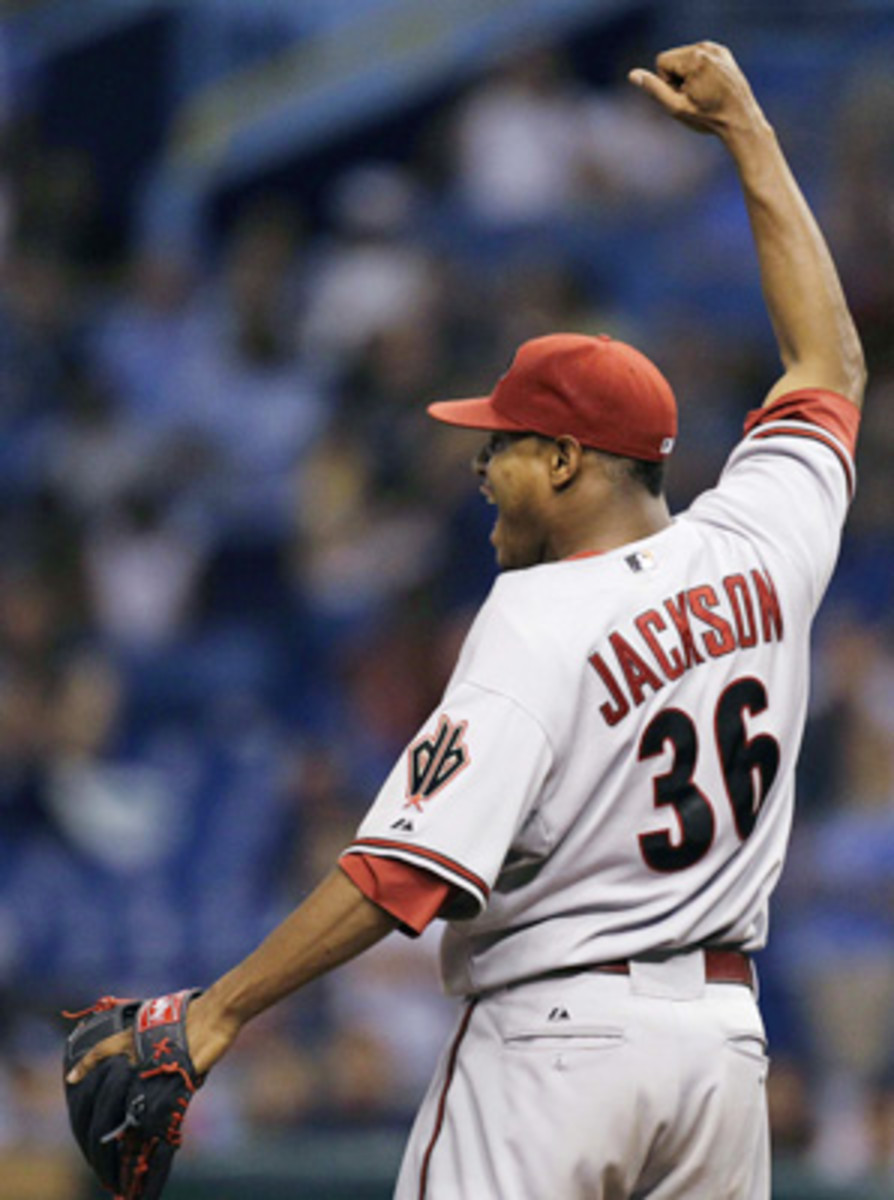Jackson's no-hitter, Rays' hitless trend a lesson in randomness
When Edwin Jackson no-hit the Tampa Bay Rays Friday night, he became the second pitcher in the span of a month and a half to hold the Rays hitless and the third in the last calendar year to do so. In the 134 years since the creation of the National League, no team has ever been no-hit three times in a calendar year before, but while the Rays' set an unfortunate record, their feat was not completely unprecedented.
Limit your view to a single season and the Rays are the fifteenth team to be no-hit twice in one year, the last being the 2001 Padres. Expand your scope to two consecutive seasons and they are the 27th team to be no-hit in consecutive seasons (or 28th if you double-count the 1968-70 Phillies, the only team ever to be no-hit in three consecutive seasons). Most significantly, if you go all the way back to 1884, you can find the one other team in history that was no-hit three times over the course of two seasons. The 1884-85 Providence Grays were no-hit on June 27, 1884 (by Larry Corcoran, no relation), then twice in 1885, on July 27 and August 29. The Grays' record of having been no-hit three times in a 428-day span was the record the Rays broke Friday night when they went hitless for the third time in a mere 306 days. So, while the Rays victimization was indeed record-breaking, it was not entirely unprecedented.
Those 1885 Grays were also one of seven teams to have their two single-season no-hit games come closer together than the Rays' this year (see table). Prior to Edwin Jackson's no-hitter Friday night, the Rays were last no-hit on May 9 by Oakland's Dallas Braden. The span between those games was 47 days. The average distance between same-season no-hit games by a single team is 61 days. The record is one single day set, amazingly, by the 1917 World Champion White Sox, who were no-hit by the St. Louis Browns' Ernie Koob and Bob Groom on May 5 and 6 at Sportsman's Park in St. Louis (though Groom's no-hitter came in the second game of a double-header so the no-hitters weren't in consecutive games).
Fewest Days Between No-Hit Games1917 Chicago White Sox -- 1 1923 Philadelphia Athletics -- 3 1884 Pittsburgh Alleghenys (American Association) -- 5 1972 Cincinnati Reds -- 20 1965 Chicago Cubs -- 21 1960 Philadelphia Phillies -- 29 1885 Providence Grays -33 2010 Tampa Bay Rays -- 47
As the presence of the 1917 White Sox indicated, the Rays aren't the best team ever to be no-hit twice in one season, though given that those White Sox played in the deadball era, one wonders if the 2009-10 Rays were the least likely. Fortunately, there's a fairly common statistic that allows us to determine a team's likelihood of getting a hit, it's called "batting average." Those 1884-85 Providence Grays posted a .231 team batting average over the course of those two seasons, which made them far more likely to be no-hit than the Rays, who have hit .259 over the 2009 and 2010 seasons. That .259 average is robust by the standards of the 27 teams that have been no-hit twice over the course of two seasons, but it's not a record.
In fact, five other teams were no-hit either in consecutive seasons or twice in a single season while posting a higher batting average (and thus being less likely to be no-hit at all). The all-time record for batting average by a two-time no-hit victim was set by the 1898 Boston Beaneaters (later the Braves), who hit .290 yet were no-hit twice, 77 days apart. That might seem remote and inapplicable, but the next team on the list is anything but. The 1996 Colorado Rockies, long before the humidor was introduced to Coors Field, hit .287 but were no-hit 129 days apart. No need to bother with their splits either, the first no-hitter (pitched by Al Leiter) came on the road, but the second (by Hideo Nomo) came at home.
Highest Batting Average by Teams No-Hit Twice in Two Seasons or Less.290 -- 1898 Boston Beaneaters .287 -- 1996 Colorado Rockies .271 -- 1923 Philadelphia Athletics .269 -- 1946-47 Boston Braves .261 -- 1990-91 Toronto Blue Jays .259 -- 2009-10 Tampa Bay Rays
As for whether or not there's anything about the Rays' offense that makes them prone to being no-hit, you can't get a better answer to that than their batting average, which firmly states that there is not. Their first two no-hit games came against lefties on the road, and the Rays do hit worse on the road and against southpaws, but their average is still better than .250 on both splits, and Jackson is a righty who no-hit the Rays in Tampa.
Rather, what the Rays are giving us is a lesson in randomness. No-hitters and perfect games (lefties Mark Buehrle and Braden didn't just no-hit the Rays, they were perfect against them) are so rare that their occurrence is essentially random. Browse any list of the no-hitters in major league history and you'll find a mix of Hall-of-Famers, All-Stars, journeymen, and scrubs, and random fluctuation in frequency from year-to-year. The word random often is misinterpreted as "infrequent," but true randomness merely lacks a pattern. That doesn't mean occurrences can't clump up, as they have this year, or as they have with the Rays, only that what could be perceived as a pattern isn't. So the Rays have been no-hit thrice in 306 days. It's a record, and it is surely embarrassing to the Rays, but it doesn't tell us anything about them as a team. They still have the fourth-best offense in baseball by runs scored and the fourth-best record in the major leagues.
They just have a humiliating historical footnote to go with it.






